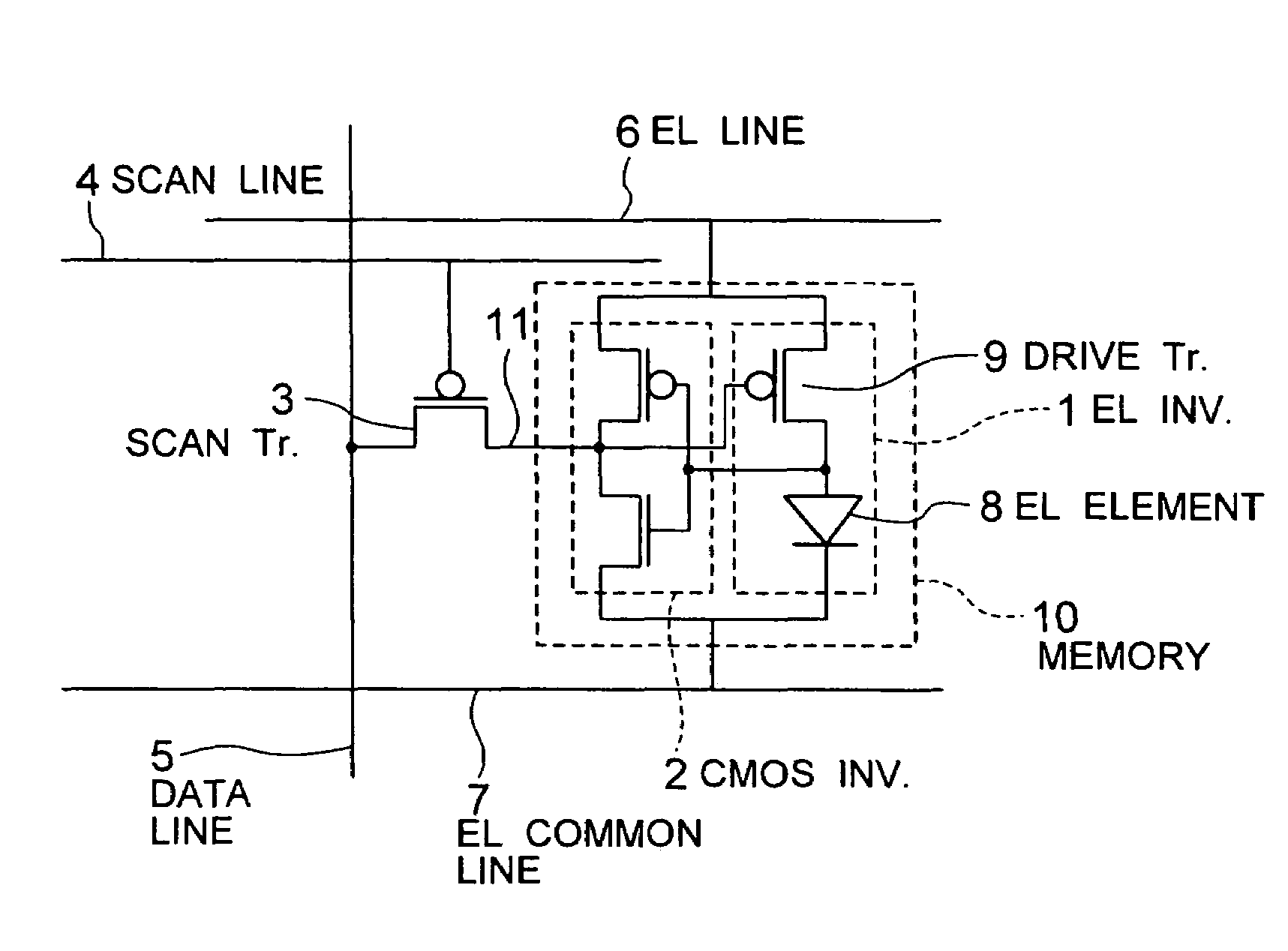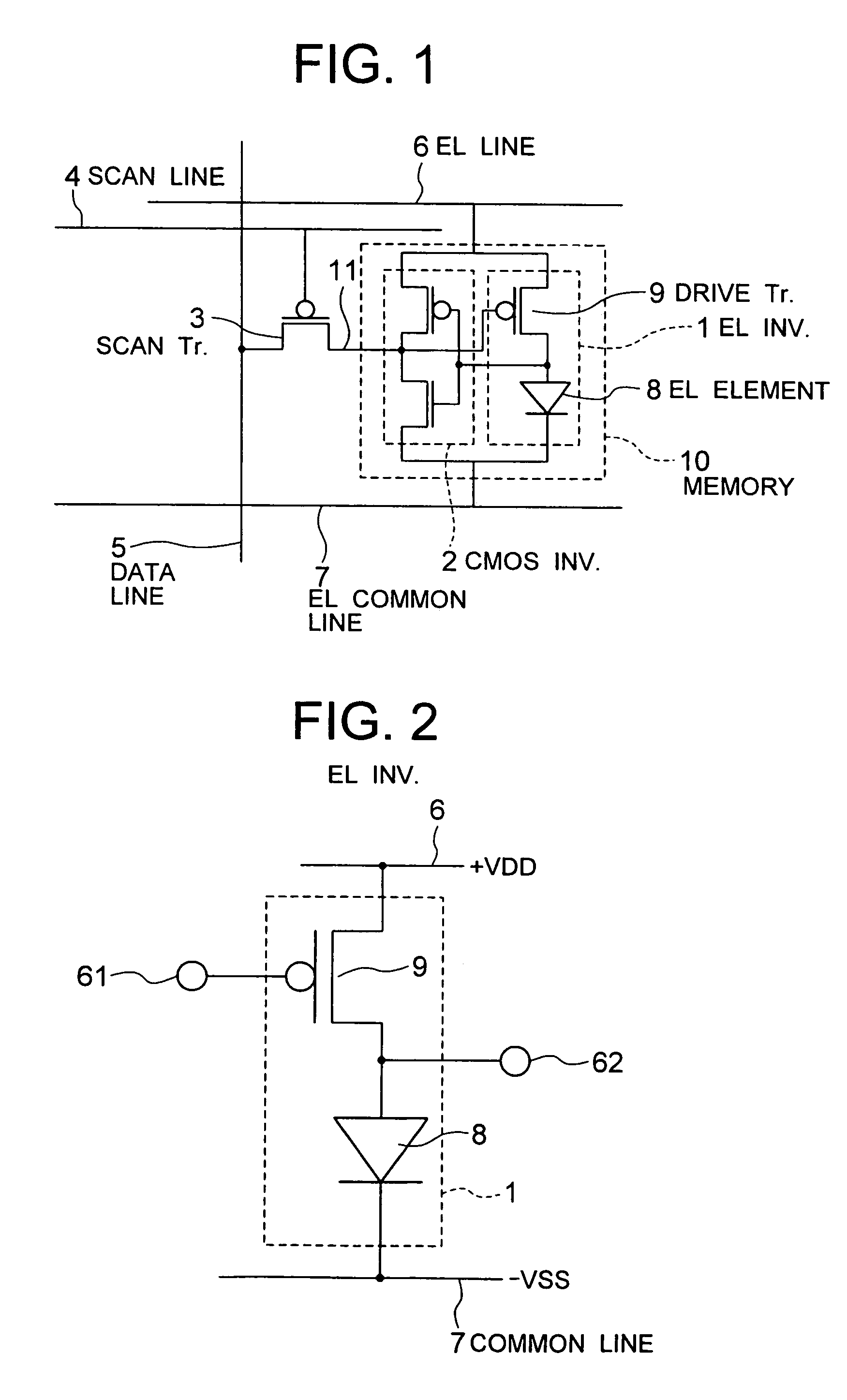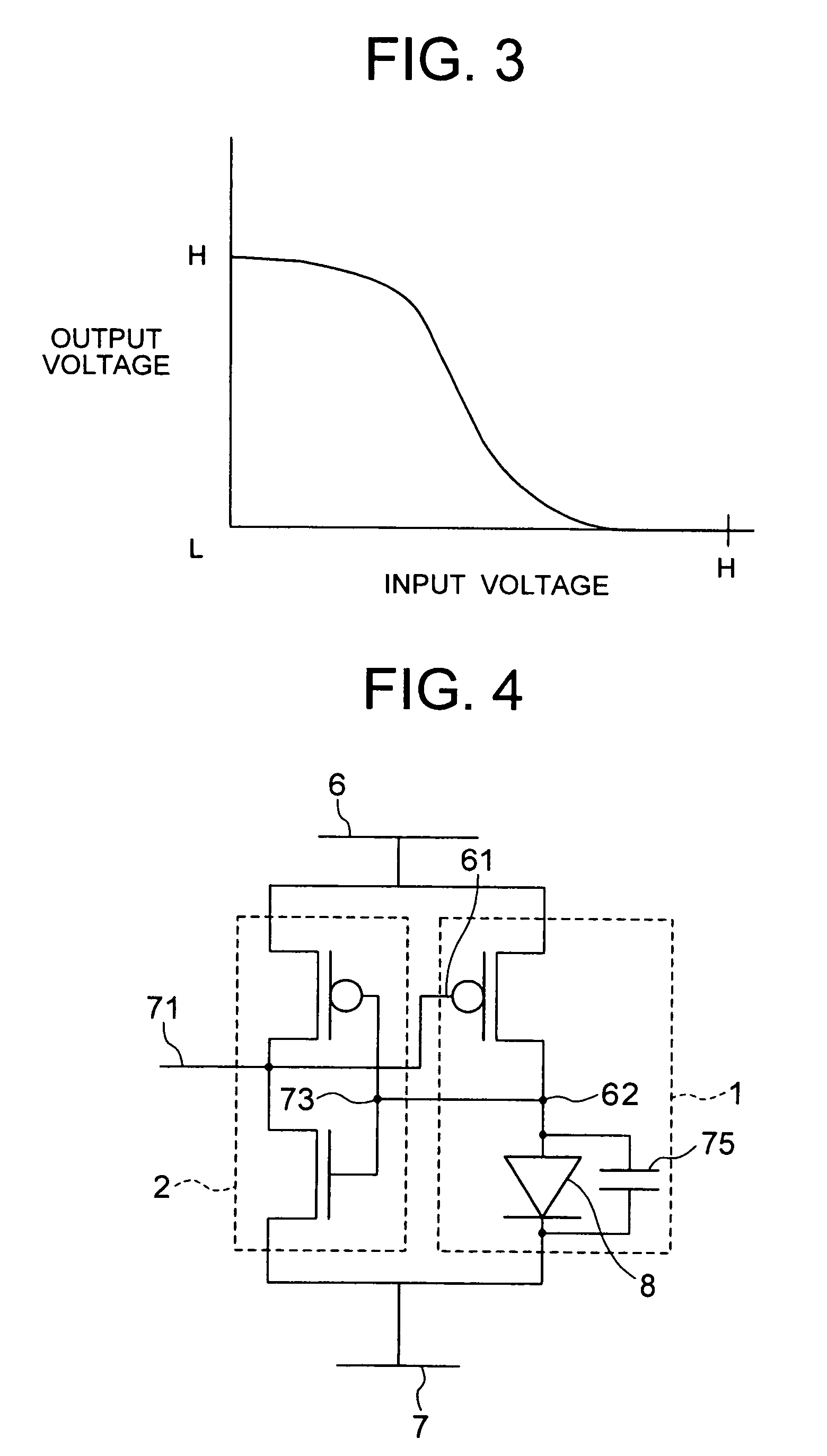Emissive display using organic electroluminescent devices
- Summary
- Abstract
- Description
- Claims
- Application Information
AI Technical Summary
Benefits of technology
Problems solved by technology
Method used
Image
Examples
first embodiment
[0032]Hereinafter, a plurality of embodiments of the present invention will be explained in detail by using the accompanying drawings. FIG. 1 shows a pixel circuit configuration of a display which is a In the pixel, a scan line 4 and a data line 5 are arranged so that they intersect with each other, and a region enclosed by the lines is a pixel region. Furthermore, an EL power supply line 6, and an EL common line 7 are connected.
[0033]In the inside of the pixel, a memory circuit 10 including an EL inverter circuit 1 comprised of an EL device 8 and a driving transistor 9, and including a CMOS inverter circuit 2 formed by CMOS connection is arranged. The memory circuit 10 is connected to the data line 5 through a main circuit of a scan transistor 3, and a gate of the scan transistor 3 is connected to the scan line 4.
[0034]FIG. 2 shows the operation of the EL inverter circuit 1. The driving transistor 9 is a p-channel transistor, and its source terminal is connected to the EL power su...
second embodiment
[0048]Next, a second embodiment shown in FIG. 7 will be explained. In the present embodiment, the transistors within the pixel are all formed by only p-channel type having the same threshold value characteristic. By this configuration, the feature is that the transistor fabrication process is simplified, and it is possible to manufacture at low cost.
[0049]In the circuit configuration, the EL device 8 and the driving transistor 9 have the same configuration as the first embodiment. The other set of inverter is not the CMOS inverter, but a PMOS inverter 47 in which all the transistors are formed by p-channel transistors. The operation of this circuit will be explained below.
[0050]The PMOS inverter 47 is formed by two p-channel transistors including a reset transistor 46 and a set transistor 43, and one MOS diode which is a bias diode 44, and a bias capacitance 45. The set transistor 43 is turned on when it changes the output of inverter 47 to a L-(logical low) level. In order to chang...
third embodiment
[0055]Furthermore, as a circuit configuration for small power consumption, there is a third embodiment in which all the transistors are formed by n-channel type transistors. As shown in FIG. 8, all the transistors are formed by N-type. They are a scan transistor 143, set transistor 142, reset transistor 144, and bias diode 145.
[0056]The circuit operation is the same as the second embodiment. When it is intended to form this circuit with thin-film transistors, since it is possible to reduce the current during off state of the transistors to a great extent by employing the leakage current reducing structure such as a LDD structure with N-ch TFT, and a series connection configuration of transistors, the power consumption of circuit can be further reduced as compared with the second embodiment. As to the configuration for reducing the leakage current, a general method may be used.
[0057]In the second and third embodiments, when the on state of pixel is continued, both the set transistor ...
PUM
 Login to View More
Login to View More Abstract
Description
Claims
Application Information
 Login to View More
Login to View More - R&D
- Intellectual Property
- Life Sciences
- Materials
- Tech Scout
- Unparalleled Data Quality
- Higher Quality Content
- 60% Fewer Hallucinations
Browse by: Latest US Patents, China's latest patents, Technical Efficacy Thesaurus, Application Domain, Technology Topic, Popular Technical Reports.
© 2025 PatSnap. All rights reserved.Legal|Privacy policy|Modern Slavery Act Transparency Statement|Sitemap|About US| Contact US: help@patsnap.com



